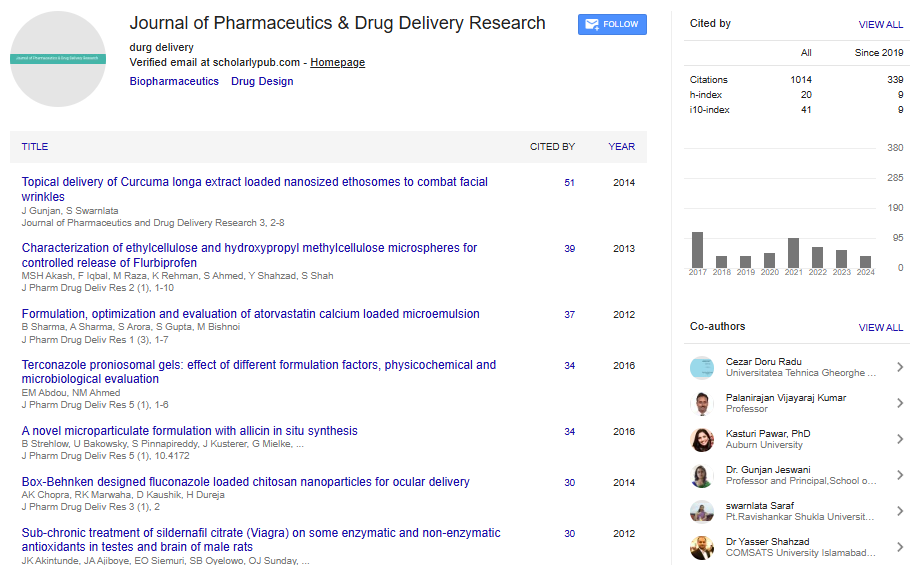Gold nanoparticles with densely-packed shells by surface-initiated atomic transfer polymerization shell for gene delivery
Sol Lee, Student, Youngju Son, Wei Mao, Jiun Shin and Hyuksang Yoo
Kangwon National University, Republic of Korea
: J Pharm Drug Deliv Res
Abstract
Although gold nanoparticles have been widely employed as gene carriers, rigidity and low payload of the particles often resulted in poor compaction efficiency and low transfection efficiency. To circumvent these issues, we surface-decorated AuNP with densely-packed anionic shells by surface initiated atom transfer radical polymerization (SI-ATRP) and assembled siRNA/PEI layers for enhanced incorporation of nucleic acids. HAuCl4 solution was heated with stirring. After heating, trisodium citrate solution were added and reacted. After cooling down to room temperature, gold nanoparticles were initiated by disulfide initiator in the DMF. SEMA and bpy were dissolved in a mixture of DW and methanol. After nitrogen purging, surface initiated AuNPs in DMF were added drop by drop and then CuBr were added. Each step has performed in with nitrogen purging and Bpy and CuBr were used as a ligand and a catalyst, respectively. After that, branched PEI and siRNA was layer-by-layer incorporated by electrostatic interaction, sequentially. AuNP showed a size of 12 nm by TEM. After ATRP of SEMA, the diameter was increased up 24 nm by TEM, suggesting that pSEMA shells were decorated on AuNP. ζ-potential analysis indicated that the surface charge of AuNP became anionic after ATRP on AuNPs. This indicated that anionic pSEMA shells were immobilized on the surface of AuNP. After incorporation of siRNA, these carriers showed increased cationic charge densities on the surface, suggesting siRNA was incorporated on the surface according the charge ratio (nitrogen/phosphate (N/P) ratio=1~16). TEM-elemental mapping clearly confirmed the presence of pSEMA (sulfur), PEI (nitrogen) and siRNA (phosphate) on the surface of AuNP. Since we successfully incorporated siRNA on the bi-layers of PEI and pSEMA shells; these carrier showed different incorporation efficiency according to the charge ratio of PEI/siRNA, which was confirmed by gel retardation assay.
Biography
Sol Lee has received her BS degree from Kangwon National University, Republic of Korea in 2016. She is presently focusing in the fields of biomedical materials in her Master’s course in the Graduate School of Kangwon National University, Republic of Korea. She has great interests in therapeutic delivery, including drug and gene delivery, using metal materials such as gold nano-carriers, for tumor targeting and tissue engineering using biodegradable materials such as hydrogel/ nanofibrils hybrid for advance cell cultivation.
Email: dlthf789@kangwon.ac.kr
 Spanish
Spanish  Chinese
Chinese  Russian
Russian  German
German  French
French  Japanese
Japanese  Portuguese
Portuguese  Hindi
Hindi 
